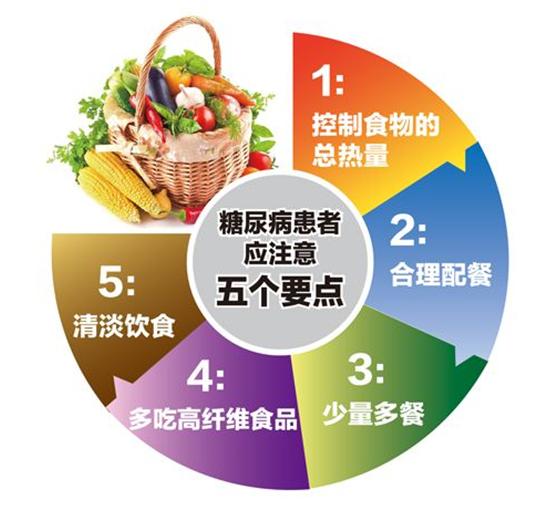How do people with diabetes organize their daily diet?
How do people with diabetes organize their daily diet? 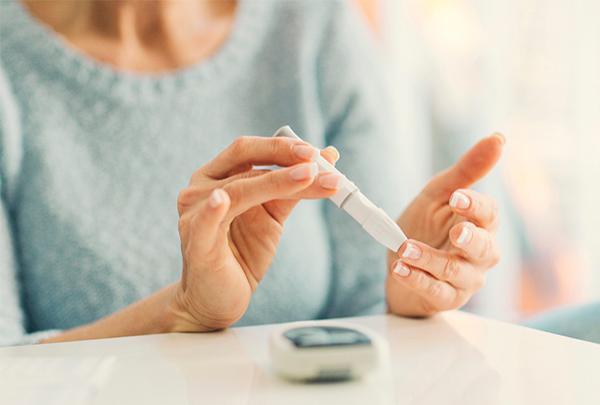
Answer:Diabetes is our daily life people called "rich disease", why people called diabetes is "rich disease"? Because once you have diabetes, you need to avoid eating and drinking, but also in the daily diet on the arrangement of reasonable and appropriate, nutritionally balanced food, to stabilize the phenomenon of diabetes blood glucose rise, control the progress of diabetes.
So how do people with high diabetic blood sugar follow a daily diet?
I will continue to explore this issue with you next.
The most basic treatment for diabetic patients with high blood glucose is diet therapy, diet therapy is the most fundamental to diabetic patients with high blood glucose is a reasonable control of appetite, which can reduce the load on the body's β-cells, which is conducive to the control of blood glucose levels.
From the basic principles of treatment of diabetes is to diet therapy, exercise therapy, supplemented by drug therapy, so that diabetic high blood glucose to control blood glucose close to the normal range through dietary therapy, in order to delay and reduce the occurrence of a variety of complications, but also to maintain a proper body weight for daily work and life, so diabetic patients are able to automatically cooperate with the self-care and management of the diet can be better to improve the quality of life of diabetic patients. The quality of life of diabetic patients, to maintain diabetic blood glucose high can be stabilized.
Then the key to dietary control for diabetics with high blood sugar is to press the diet in this way.(1) Reasonable choice of food. The daily diet of patients with high diabetic blood glucose should consist of staple foods, dairy products, vegetables, fruits, meat, eggs, fish, shrimp, beans and legumes, and vegetable oils.
(2) diabetic patients with high blood sugar must have staple food in three meals a day, some people think that staple food contains more sugar, eat staple food blood sugar will be higher, if the variety and quantity of staple food is properly selected, the postprandial blood glucose will not rise sharply, on the other hand, if the staple food is eaten less, there is a possibility of intake of more fat and protein higher food, will aggravate the complications that already existed, so that diabetic patients with high blood glucose should be According to their own physical activity intake of the optimal amount of staple foods, such as light physical activity of diabetic patients with high blood sugar can eat about 150 to 250 grams of staple foods per day, this staple food can choose a part of refined rice, white flour with coarse grains such as cornmeal, buckwheat, oat flour, sorghum flour, etc., made of miscellaneous grain steamed breads, miscellaneous grain rice.
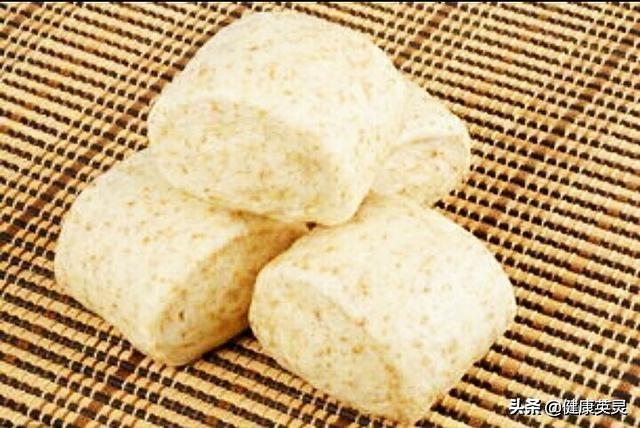

You can also use rice and other rice (millet, black rice, barley))etc. and peanuts from beans (red, green, soy, black) made into porridge.
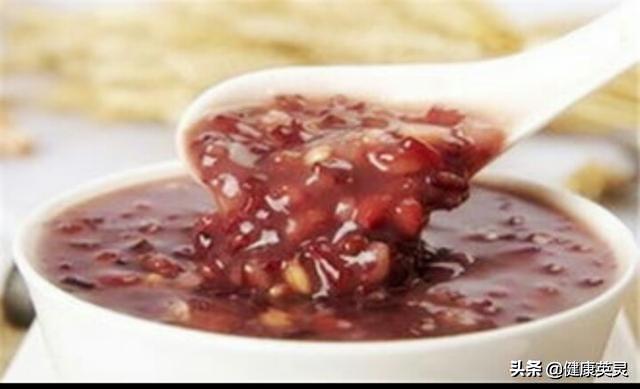
Favorable for diabetic blood sugar reduction, but consume in moderation.
(3) For the choice of milk, fresh milk, powdered milk and yogurt are preferred, not unsweetened flavored yogurt or fruit yogurt. Do not choose cheese, cream, condensed milk, etc., as these are high in fat.
If diabetes has high blood sugar and hyperlipidemia, you can choose skimmed milk powder, and the recommended daily intake of fresh milk is 250 ml or 10-15 grams of powdered milk and 150-200 ml of yogurt.

(4) the choice of vegetables, vegetables have a particularly small impact on blood glucose, in addition to starchy vegetables, because they are rich in inorganic salts, vitamins and dietary fiber, other vegetables, such as onions, kale, tomatoes, etc. contain bioflavonoids which are natural antioxidants, to maintain the normal function of the blood vessels, and therefore advocate that diabetic patients with high blood glucose more vegetables, diabetic patients are recommended to consume at least 500 grams of fresh vegetables per day. Fresh vegetables, and variety, at least two kinds of vegetables.

(5) the choice of fruit, fruit is rich in vitamins, inorganic salts and dietary fiber conducive to human health, but diabetic high blood sugar, fruit contains carbohydrates, that is, converted to glucose, these sugars are digested and absorbed faster, the role of glucose is relatively high, so diabetic high blood glucose patients can not eat fruit, diabetic patients with blood glucose control in the fasting glucose and postprandial glucose were 6.1 mmol per liter and 8.0 mmol per liter, and blood glucose stabilization 1 to 2 weeks before eating fruit, but do not eat fruit immediately after the meal. and 8.0 mmol per liter, and blood sugar stabilization 1 ~ 2 weeks before eating fruit, but do not eat fruit immediately after meals.

(6) People with high diabetic blood sugar choose fresh meats, lean meats (beef, lamb, chicken, pork), and try not to consume animal offal, meat skins, and cholesterol-rich foods.

(7) Choose egg food, such as eggs, goose eggs, duck eggs, etc., diabetic patients with high blood sugar can be one egg a day, and hypercholesterolemia can be every other day a whole egg, for diabetic patients with high blood sugar and high blood pressure should not eat eggs, salted eggs.
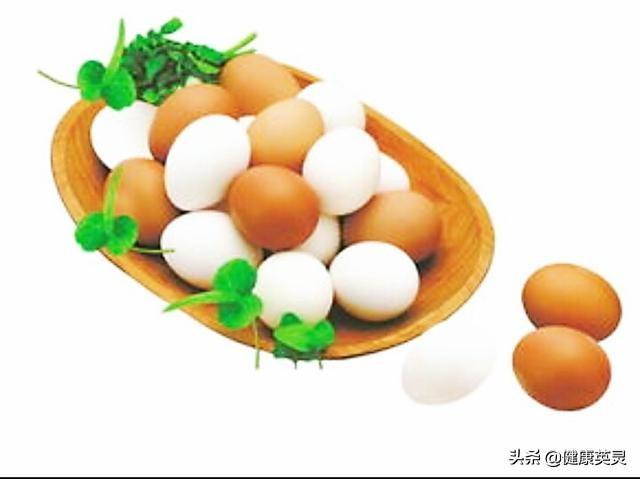
(8) choose fish, shrimp food, fish, shrimp fat composed of unsaturated fatty acids, especially n-3 long-chain polyunsaturated fatty acids, have to reduce blood lipids, blood pressure, to prevent atherosclerosis effect on diabetic patients with high blood glucose has a hypoglycemic effect, diabetic patients can be eaten every day meat, eggs, fish, shrimp a total of 100 to 200 grams.


I would like to remind you that fish roe, shrimp, diabetic patients with high blood sugar combined with hypercholesterolemia should not be consumed, because fish roe and shrimp roe contain high amounts of cholesterol.
(9) Choosing beans and soy products is one of the ideal foods for diabetic patients with high blood glucose. Diabetic patients can choose dried tofu, shredded tofu, tofu, soymilk, tofu brain, and other soy products. However, it is not advisable to choose oil tofu. Daily intake of tofu 150-200 grams, 100 grams of dried tofu, 50-100 grams of shredded tofu, and 250 milliliters to 500 milliliters of soymilk.
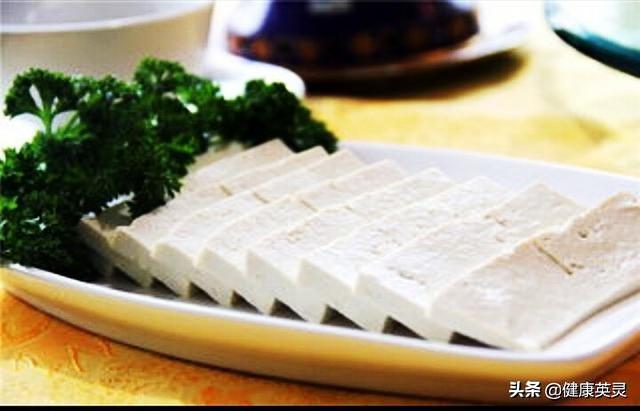
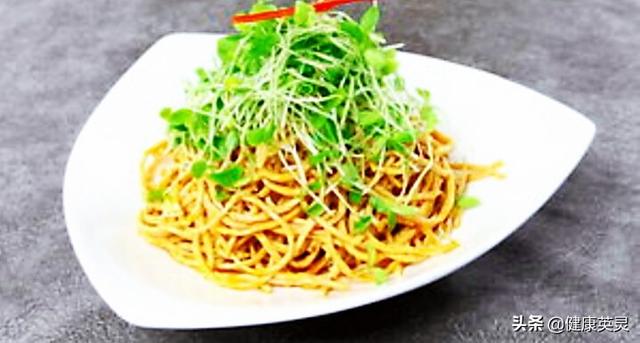

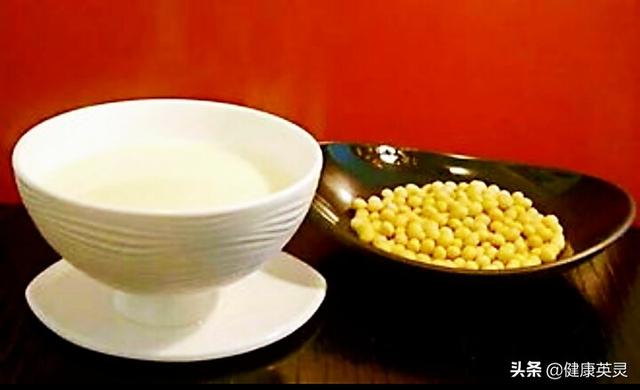
(10) Choose vegetable oil, vegetable oil is suitable for diabetic patients, but should not choose animal oil as cooking oil, choose vegetable oil, such as olive oil, rapeseed oil, sunflower oil, peanut oil, of which tea oil and olive oil is preferred, the intake of vegetable oil, 20-30 ml per day, which is equivalent to 2-3 tablespoons. People with high diabetic blood sugar should not consume too much oil.

(11) Diabetic patients with high blood glucose quit smoking and drinking, diabetes daily salt consumption is controlled within 6 grams, excessive intake of salt will be complicated by high blood pressure, atherosclerosis and other complications.
(12) choose to drink tea, tea on diabetes combined with high blood pressure, obesity are beneficial, because tea in the tea polysaccharides, tea polyphenols have a clear role in lowering blood sugar, come in the study found that tea can improve insulin sensitivity, so advocate diabetes, high blood sugar patients drink tea, you can choose green tea, black tea, tea dosage of 5 to 10 grams per day is appropriate.

Through the above correct food selection, but also reasonable allocation of various types of food and meals to do to ensure that, in order to effectively control blood sugar, diabetic patients with high blood sugar in three meals a day of staple food, meat, vegetables, in accordance with the principle of distribution of 1/3 of the morning, noon and night, each meal before the measurement of blood glucose, if the blood glucose is high, it will be part of the three meals of the staple food to stay in the extra meal to be eaten, milk allocated to breakfast or extra meal to be eaten. If your blood sugar is low at each meal, you can add 1 or 2 extra meals in between the 3 meals, and you can also eat fruits with low glycemic index, such as pears, kiwis and peaches, to stabilize your blood sugar through dietary adjustments.
If there are some diabetic patients with high blood sugar, usually live a heavy taste, love to eat sugar friends, slowly change these bad eating habits, in the diet to develop a light diet, nutritionally balanced, quit smoking and quit drinking, summing up is a diabetic patient with high blood sugar daily so that the press of the diet.
Finally, I would like to remind everyone that a balanced diet, abstinence from smoking and alcohol, moderate exercise and a balanced mind are conducive to a long and healthy life and a happy life.
May I ask if diabetes and high blood sugar are not the same thing? I can tell you, except for alcohol, tobacco and sugar, diabetics can eat whatever they want, but there must be a certain amount.
Patients with diabetes should first understand the general principles of nutritional therapy. Patients with diabetes should set reasonable quality goals, control total energy intake, distribute various nutrients in a rational and balanced manner to achieve the goal of metabolic control, as well as to meet individual dietary preferences.
Daily essential nutrients for diabetic patients include: fat, carbohydrates, protein, dietary fiber, trace elements, etc., of which fat, carbohydrates and protein are the three major nutrients necessary for the human body, dietary fat should not provide more than 30% of the total energy of the diet, carbohydrates provide energy should account for 50%-60% of the total energy, and protein intake should account for 10%-15% of the total energy intake. 10%-15%. The main sources of dietary fiber are legumes, cereals, fruits, vegetables and whole grains. Diabetics are prone to deficiencies of B vitamins, vitamin C, vitamin D, and many trace elements such as chromium, zinc, magnesium, iron, and manganese.
All of the above should be consumed by diabetics to avoid malnutrition.
Diabetic patients want to achieve a reasonable diet structure, follow the dietary requirements of the Chinese residents dietary pagoda is also reasonable. First of all, to ensure that cereals potatoes and miscellaneous beans 250-400 grams, such as wheat, corn, soybeans, black beans, sweet potatoes and other foods; the second layer of the Pagoda for the vegetables and fruits, diabetic patients should pay attention to limiting the intake of fruits, especially to pay attention to fruits with a high glycemic index, you can choose apples, pears, oranges and other fruits with a low glycemic index, and hawthorn, bananas and so on should be eaten sparingly; the third layer of the Pagoda is the livestock and poultry meat, fish and shrimps and eggs, diabetic patients should pay attention to eat less or not eat fat meat, choose red meat, such as beef and lamb, fish and shrimp intake can be done to eat fish twice a week; the fourth layer is milk and dairy products 200-400 grams, soybeans and nuts 30-50 grams; the fifth layer is the oil and salt, oil in the 25-30 grams / day, salt should be controlled in the 6 grams / day below.
Diabetic patients cannot diet and must eat regularly at regular intervals every day. Eating too much will lead to a rise in blood glucose, while eating too little will lead to insufficient supply of nutrients and metabolic disruption. The diet of diabetic patients is based on light, low-salt, low-fat and low-sugar foods, which must be very careful to prevent excessive sugar and ensure balanced nutrition. A diabetic's diet should follow the following points:
1. Eat vegetables first and then eat, supplement dietary fiber, delay the digestion and absorption of carbohydrates in the body, reduce the rate of blood sugar rise.
2. Take care to supplement vitamin B and vitamin C to prevent retinopathy brought about by diabetes.
3. Diabetic patients should not consume more than 2 grams of salt per meal and replace iodized salt with low-sodium salt.
4. Eat less and more meals to prevent postprandial blood glucose rise brought about by overfeeding to insulin overload, and at the same time, avoid hypoglycemia.
5. Reduce the consumption of easy-to-digest foods such as porridge, porridge is easily digested and absorbed by the stomach and intestines into glucose, drinking porridge than eating blood sugar rises faster.
6. Moderate consumption of coarse grains, coarse grains of slow digestion and absorption, can effectively alleviate the postprandial blood sugar rises too quickly, but consume too much will increase gastrointestinal pressure, damage to the stomach.
7. Consume 250-500 milliliters of milk per day. Milk is rich in protein and calcium, the lack of which can lead to aggravation of diabetes.
8. Between meals you can eat a small amount of fruit to replenish vitamins and various elements, but after eating fruit, you need to reduce the portion of the main meal so that the amount of sugar intake remains unchanged.
9. People with diabetes should drink enough boiled water every day to rehydrate themselves; drinking too little water can cause complications such as kidney disease.
10. Should not eat animal offal and other high cholesterol food and animal fat, such food will lead to obesity, increased blood fat, triggering cerebral infarction and other vascular diseases.
Instructor: Hui Lichao, Deputy Chief Physician, Department of Endocrinology, Jinzhou Central Hospital.
She has been engaged in endocrine clinical work for 15 years and specializes in the diagnosis of diabetes and other common endocrine diseases.
If you find this article useful, please feel free to like or recommend it to your friends and follow [Medlink Media].
Diabetes mellitus is a disease in which blood glucose cannot be broken down and metabolized properly due to defective insulin secretion or impaired biological function of insulin even though it can be secreted for various reasons. Therefore, the main manifestation and characteristic change of diabetes is hyperglycemia!

It is because diabetic patients have limited insulin secretion or impaired insulin function, which leads to the intake of sugar into the body can not be broken down properly, therefore, the manifestation of high blood sugar. And in order to avoid the elevation of blood sugar, finding ways to control the intake of sugar and increase the breakdown of sugar by insulin becomes the main direction of diabetes treatment. And in fact, the foundation of all sugar reduction comes down to dietary control, because controlling diet, is the foundation of diabetes treatment.
So how should diabetics organize their daily diet?
I. Eating and drinking at regular intervals
Is there a link between regular meals, and diabetes too? Of course there is! Diabetes itself is limited insulin secretion or impaired function, and insulin secretion in normal people, there is a clear time rhythm, that is, we often mention the biological clock. In fact, insulin secretion also has a biological clock phenomenon, if the diet is regular, every time you are about to eat, the insulin secretion curve will be significantly upward, so the diet is regular, for insulin secretion of the biological clock has a significant role in helping. For a patient who already has irregular insulin secretion, eating regularly may reduce the amount of insulin used, resulting in more accurate blood glucose control.
II. Aggregate control
The total amount of food consumed each day needs to be strictly controlled. Because if the total amount of intake is too much, it will be converted into sugar and so on will be the more, and originally insulin secretion is not enough, and now too much diet needs more insulin to break down, it will make the blood sugar more difficult to control. Secondly, the total control of the diet, can also reduce the occurrence of obesity, and the latest research shows that after weight loss, there is the possibility of reversal of diabetes, after all, too obese body, need more energy to support, but also need to consume more food, but also into the more you eat the more fat, the more fat the more you eat, the more you eat, the more you eat the worse the blood glucose control of the strange circle. There is also the total amount of control of the diet, can make the insulin secretion rhythm more tend to homeostasis, is conducive to the recovery of pancreatic islet function.

III. Eat less, eat more
Now that we understand that diabetes is due to insufficient or limited insulin secretion, eating smaller meals can also be a solution to poor blood sugar control or sudden spikes. If too much food is consumed at a time, there will be a noticeable spike in blood glucose, whereas if less food is consumed at a time, it will make the rise in blood glucose not very noticeable, and after the food consumed has been metabolized, it is possible to eat again in small amounts. Therefore, eating smaller meals becomes one of the most important tools for stabilizing blood glucose control.
IV. Diversified diet
Diabetes is not not allowed to eat, nor can not eat, but to dietary diversity, because a diversified diet can ensure the balance of intake of nutrients, and diversified diet can improve the dietary structure, not all diets are insulin to break down, diversified diet can also reduce the burden on the pancreas, increase dietary nutrients. For example, a balanced intake of protein, fat, vitamins, sugar, trace elements and other essential nutrients is conducive to better health and blood sugar control.
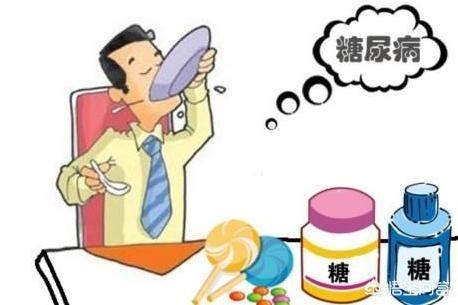 Diabetes is a disease that requires strict dietary control as diet is the basis for good blood sugar control. So, if you can do the above points, good blood sugar control is not far ahead. If you can't do the above, controlling your blood sugar may only be a beautiful vision!
Diabetes is a disease that requires strict dietary control as diet is the basis for good blood sugar control. So, if you can do the above points, good blood sugar control is not far ahead. If you can't do the above, controlling your blood sugar may only be a beautiful vision!
If you have any health questions, you can pay attention to the heart of health, we will push the latest, most practical, most understandable science to you every day! You can also click on my home page of the online consultation, I can solve more health problems for you!
The five horsemen of diabetes prevention and treatment: diet therapy, exercise therapy, drug therapy, blood glucose monitoring and health education. Diet therapy and exercise therapy are the two cornerstones of diabetes prevention and treatment.
But a lot of sugar users to diet therapy applied to the "hunger therapy", which do not dare to eat, that do not dare to eat, live to starve themselves into malnutrition, the body nutrient deficiencies, more detrimental to the control of blood vessels as well as the overall health, therefore, the sugar users must be clear and reasonable scientific dietary principles.
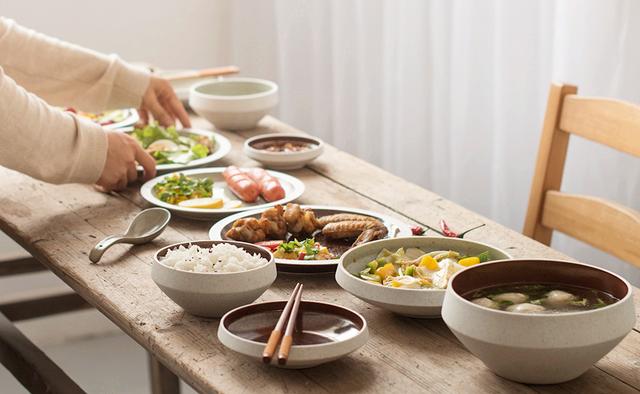
Eat your staples.: Sugar lovers diet does not exist a certain kind of food can not eat at all, but to learn: what to eat, how much to eat, how to eat. Staple food, although mainly containing starch, carbohydrate content is relatively high, but still have to eat, but it is the staple food to control the amount of food, in the choice of ingredients to increase the coarse grains, coarse grains accounted for at least 1/3 of the staple food.
Eat more vegetables: Leafy vegetables are not only rich in dietary fiber, various types of vitamins and minerals and lower calories, so sugar lovers can eat more, eat vegetables 500g per day.
Fruit Eating SmartMany people with diabetes say that they have not dared to eat fruit since they have diabetes, because fruit is sweet and has sugar. This is a very wrong idea, although the fruit has sugar, but the fruit is rich in vitamins, minerals, pectin and other nutrients, for the body has a very good health promotion effect. However, because it contains a certain amount of sugar, so sugar lovers should eat fruit only after the blood sugar reaches the standard, and to choose strawberries, cherries, grapefruit, pears and other low glycemic index fruit, and do not exceed 200g per day, eat between meals.
Eat less oil and salt: Sugar lovers due to the existence of sugar, fat, protein metabolism disorders, so we should avoid eating saturated fat-rich animal oils, eat more unsaturated fat-rich olive oil, flaxseed oil, etc., no more than 30g of oil; hypertension will aggravate vascular damage, so sugar lovers, whether or not accompanied by hypertension, the amount of salt per day should not be more than 6g.
Sugar man health network, a temperature control of sugar platform, welcome to pay attention to the questions and answers!
Once you have diabetes, how and what to eat becomes the biggest topic in the diet of sugar lovers. This is because dietary control is a prerequisite for diabetes treatment and is an important part of diabetes treatment.Among chronic diseases, diabetes is one of the most troublesome in terms of diet. First of all, it is difficult to change the previous habit of eating and drinking, which is difficult to accept both psychologically and physically.It also requires control of not only postprandial and fasting blood glucose, but also blood triglycerides and cholesterol, as well as salt, and body fat. This is because the main threat to diabetic patients is complications, such as cardiovascular disease, diabetic nephropathy, etc. 50% of diabetic patients die from cardiovascular complications.
How can sugar lovers eat sensibly?
The dietary principles of diabetes are to control total energy, to have a reasonable proportion of the three major nutrients (protein, fat, and carbohydrates), and to eat and move in a balanced manner.
1. Total energy intake is what affects blood glucose levels and body weight, theTotal energy control is the first principle, along with managing weight.
It can be measured with reference to body mass index (BMI):
BMI = actual weight (Kg) / height2 (m2)
BMI ≥24 is overweight; ≥28 is obese
BMI < 24 is one of the goals of comprehensive diabetes treatment
Normal BMI (18.5-24) is a reasonable standard for total energy intake
2. Sugar lovers needeat regularly, "3+1" or "3+2".
Three meals and extra meals at relatively regular intervals and in balanced amounts. Varying the timing of the three meals is a big no-no.
3,Control of total staple foods, promotes mixing and matching and increasing the proportion of low GI (roughage) grains.
A half-pound amount of staple food per day is OK, mainly controlling refined white rice and white flour food. Other starch that rises blood sugar slowly is possible to eat. You can mix and match to eat, such as coarse and fine, grain with beans, with vegetables are good choices. Vegetables and legumes have a very good satiety, which can effectively reduce hunger while lowering the blood sugar response.
4. Eat more vegetables and less oil.
Sugar lovers are advised to eat more than a pound of vegetables a day, especially green leafy vegetables, which provide a wide range of minerals while increasing dietary fiber intake.
Sugar lovers are best to use the cooking method of steaming, stewing and cooling, which is favorable to cardiovascular health, but also beneficial to long-term blood sugar control.
5. Meals have protein and less meat.
Protein does not raise post-meal blood sugar, but it stimulates insulin secretion, which is beneficial for blood sugar control.
You can choose fish, shrimp, egg and milk and soy products, both supplemental protein, fat intake is not excessive. If the blood fat is high, you can choose low-fat milk and yogurt.
6. Limited fruit
Fruit must be eaten fresh and whole, not replaced by fruit juice or canned fruit with added sugar.
7, adhere to the movement, strengthen muscle power
Exercise lowers blood sugar, improves insulin sensitivity, has the ability to utilize glycemic control, and prevents cardiovascular disease, among other things.
A minimum of 150 minutes of moderate-intensity aerobic exercise per week is recommended, distributed over at least 3 days per week, and not more than 2 consecutive days of inactivity. Resistance exercise may also be done when conditions permit.
Archaeologist ~ Su Juan (National Public Nutritionist Grade II, Wang Xingguo Dietitian Special Training Course Participant, Original Creator of Nutritional Science and Technology)
Diabetic patients must eat every day. But type 1 diabetes mellitus is a special disease, objectively require diabetic diet can neither eat more nor less, eat more blood sugar will rise, aggravate the condition; eat less will appear hypoglycemia, the patient will be cold sweat, convulsions, coma, and even death. Therefore, the requirements of diabetic patients can neither eat more, nor less, not to eat, hair eat just right, to reach this point, is not easy. How to do? The key is in accordance with the total calories required to reasonably develop a daily dietary standards, and strictly enforced. So how do diabetics arrange their daily diet?

How do people with diabetes organize their daily diet?
Step 1: Develop a total calorie count.
Diabetic patients should try to achieve ±5% of their ideal body weight. The formula for calculating ideal body weight is as follows: weight (kg)=height (cm)-105. Daily dietary calorie intake should be calculated according to ideal body weight and consumption level. In general, adults need 25-30 kcal per kilogram of body weight per day at rest, light physical or mental laborers need 30-35 kcal, moderate physical laborers need 35-40 kcal, and heavy physical laborers need more than 40 kcal; children, pregnant women or lactating mothers, those who are malnourished or severely emaciated or accompanied by wasting disease should be added, and those who are obese should be subtracted.
Step 2: Calculate the intake of various nutrients.
According to the Chinese diet, various kinds of grains make up the largest proportion of our food. Therefore, carbohydrates account for about 50-60% of the total daily calorie intake. It is recommended to eat more coarse rice, noodles or mixed grains and try to avoid foods containing glucose, sucrose and their products. (Each gram of carbohydrate yields 4 kilocalories)
Dietary protein content should be controlled within 15% of total calories, and animal protein is preferred as the source. Adults 0.8-1.2g per kilogram of body weight per day; children, pregnant or lactating women, malnutrition or severe wasting or with wasting disease can be increased to 1.5-2.0g; complications of renal insufficiency should be controlled at 0.6-0.8g.
The proportion of fat should not exceed 30% of the total calorie intake, of which the ratio of saturated fat to unsaturated fat should be 1:2, and the daily intake of cholesterol should not exceed 300 mg. (Each gram of fat produces 9 kcal.)
Fiber slows down food absorption, helps control postprandial blood sugar and regulates lipid metabolism. It is recommended that people with diabetes eat a diet containing no less than 40g of fiber per day. such as green leafy vegetables, beans, tubers, and fruits with low sugar content are all acceptable.
Step 3: Rationalize the intake of each meal
Diabetics are advised to eat in small portions. That is, after calculating the total amount of each nutrient required per day, they are divided into 5-7 equal portions, with 1-2 portions eaten at a time.
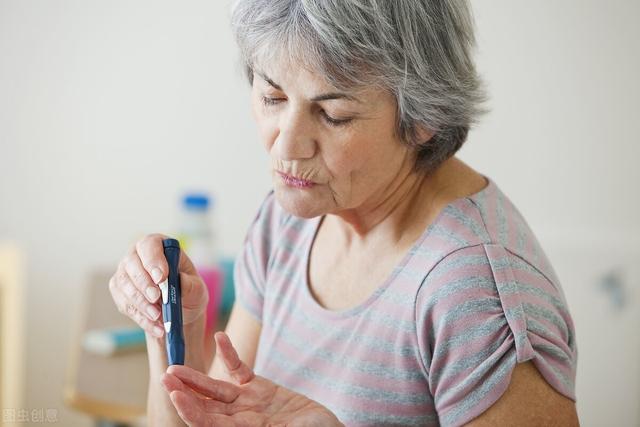
What is the diabetic schedule?
5:00-6:00 Don't get up in a hurry to get more sleep
If you wake up early, this time do not rush to get up, sleep a little more, if you can not sleep try to close your eyes to rest, or to the abdominal massage, helps the new day mental state.
Time to get up at 27:00.
This is the perfect time to wake up as your body is ready to go. Wake up by first measuring your fasting blood sugar, followed by a glass of warm water to help hydrate your body and lift your spirits.
Time to get up at 37:00.
This is the perfect time to wake up as your body is ready to go. Wake up by first measuring your fasting blood sugar, followed by a glass of warm water to help hydrate your body and lift your spirits.
49:00-10:30 Doing the hard things first
According to research, it has been found that people are at their clearest mind at this time of the day. So it is also the most suitable time to carry out more difficult work.
10:30 Proper rest to relieve fatigue
If you are sitting in front of the computer to work, this time it is best to give your eyes a break, look out of the window more, drink some water, it is best to take a proper break every hour.
11:00 Have some fruit
Eat a good breakfast, but do not eat too much, you can allocate the right amount of calories to this time to eat some fruit, you can can prevent low blood sugar, but also can relieve hunger.
12:00-12:30 Lunch
Before eating lunch, you can take a blood sugar test to guide your diet, and medication. The amount of food for lunch can be arranged to take up to forty percent. Lunch can help to provide a carry-over and help to restore the body's physical and mental strength. So you can eat a good lunch, preferably rich with.
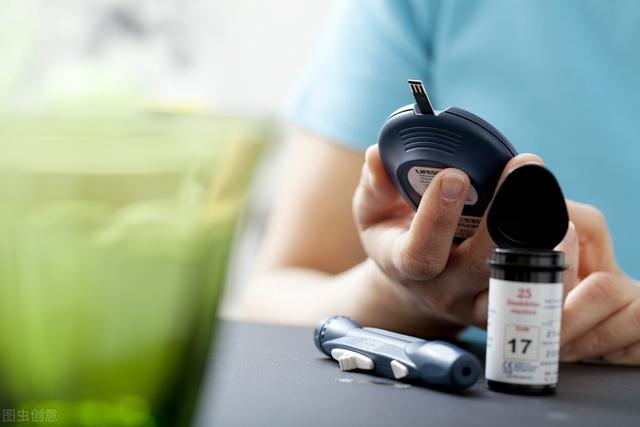
13:00-14:00 Lunch break nap
Half an hour after lunch, you can exercise properly, and then take a half-hour lunch break, which can give your body a rest. But don't take a lunch break immediately after eating, because if there is no exercise, blood sugar is easy to rise. The lunch break should not exceed one hour.
15:00 Get some sun.
After waking up, you can properly go to the activity, you can do some simple activities such as climbing stairs or stretching the body, to help refresh, better into the afternoon work.
16:00 Drink a cup of selenium-enriched buckwheat tea
Diabetic patients at this time can drink a cup of selenium-enriched buckwheat tea, this tea can help lower blood sugar, while protecting the cardiovascular, preventing atherosclerosis. Selenium-enriched buckwheat tea can help replenish selenium, can enhance the body to clean up free radicals, reduce the body and blood vessels inside the garbage, thereby reducing the elasticity of blood vessels, reduce the incidence of cardiovascular. In addition, selenium-enriched buckwheat tea also contains D-chiral inositol component, can make insulin beta cells more sensitive to insulin, help give full play to the role of insulin control of blood sugar. Together with its unique flavonoids, can help reduce the fragility of blood vessels, soften blood vessels, very suitable for diabetics.
18:00 Dinner not too rich
This time is the time to eat the meal, it is best to eat a little lighter, pay attention to ensure that the vegetables as well as the main food is sufficient, chewing and swallowing slowly. The reason why you should not eat too much for dinner is that it tends to lead to a rise in blood sugar in the Senate, and it is best to be seven minutes full.
19:00 Good time to work out
After a proper rest from dinner, it's time to exercise. It can help lower blood sugar after a meal and also help boost your body's sensitivity to insulin. Exercise
20:30 Relaxation
It's a good idea to watch TV or read a book to relax.
22:00-22:30 Bath and sleep
Sleeping time is best suited to ten o'clock at night, preferably not more than eleven o'clock. The temperature of the bath water should not be too high, it is best to be a little higher than the body temperature, about 38~39℃. After the bath proper rest, and then measure the blood sugar before going to bed, according to the blood sugar to see whether you need to add a meal, or a glass of milk. Mainly do not stay up late, often stay up late will trigger the instability of blood sugar, but also affect the health of the body.
Conclusion: suffering from diabetes, daily diet must pay extra attention, otherwise it is easy to affect the therapeutic effect. I hope the above content is helpful to you.
Diabetics are known to eat foods that contain less sugar. This is the dietary rule that has been followed by sugar lovers for ages. In fact, the dietary rule is very simple, as you will understand when the little juicer from the Juicer App writes it out below:
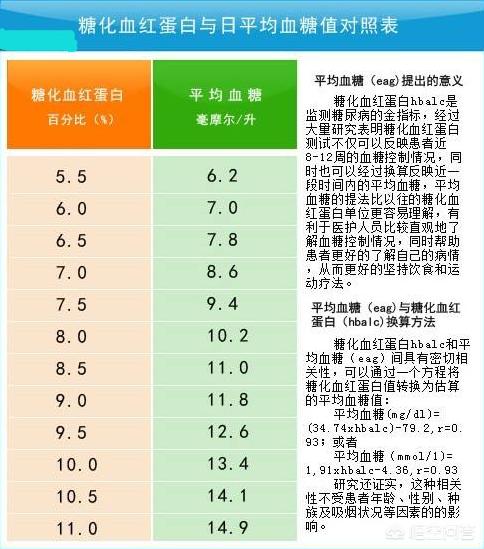
Diabetes Dietary Rules
1、Reasonable distribution of the number of meals and how many, to maintain 5-6 times a day to eat.
2. Eat more boiled meals and less fried meals.
3, meat and vegetables, eat less oily more, sour and spicy food.
4. Do not smoke or drink.

After reading the above dietary rules about diabetes, do you understand, in fact, you can often see in their daily lives, just that they do not strictly adhere to it! Knowing the dietary laws of diabetes, then we are next to understand how diabetic patients control it?
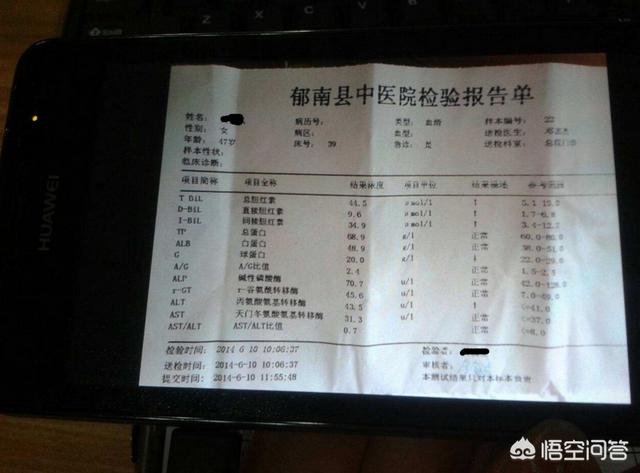
Here's what the experts at Sinjen Health Laws have to say about this question.
The Xinzhen Method of health is used by diabetic patients.Raw juicing of fruits and vegetables, juice instead of meal. The so-called raw squeezed, is to use raw vegetables, do not stir fry. Seven parts of vegetables, three parts of fruit, such a ratio, add 46 ° C warm water, put into a blender or juicer to squeeze into fruits and vegetables juice, drink until full.

pickled mustard plant stem vegetables
Especially for breakfast, don't eat anything else but juice. For lunch and dinner, you can drink fruit and vegetable juice or eat grains and cereals. Meat and milk are not recommended.
The above is a dietary therapy recommended by the experts of Xinzhen Health for the majority of sugar lovers. The text of the introduction is limited, if you still want to know more about diabetes knowledge, please send a private message to me, I will send the relevant information to, send a private message, reply to my secret code!"Diabetes."Access to the information is available.
Diabetes is a lifestyle disease, and lifestyle is mainly diet and exercise. As far as dietary changes are concerned: 1. Rice: If you used to eat a bowl of rice at one meal, now you eat half a bowl of rice at one meal, and put the other half two hours after the meal. The same goes for noodles.2. Vegetables: If every dish had meat in it before, it is now changed to only one dish with meat in it; if more than two kinds of meat were eaten in one meal, it is now changed to only one kind of meat in one meal; if half a dish of meat was eaten in one meal, it is now changed to only one third of a dish.3. Fruits: If one apple was eaten in one meal, it is now possible to eat half an apple in one meal; if three bananas were eaten in one meal, it is now possible to eat half an apple in one meal. If you used to eat three bananas at a time, you can now eat one banana at a time; if you used to eat half of a watermelon at a time, you can now eat one-third of it at a time; if you used to eat half of a cantaloupe at a time, you can now eat one-quarter of it at a time; if you used to eat two oranges at a time, you can now eat one of it at a time. 4. Extra Meals: In the morning for extra meals, you can eat half of an apple and half of a glass of milk; in the afternoon, you can eat one kaki, A cucumber, a few pieces of grapefruit; evening meal, you can drink a glass of milk. I said are easy to do, adhere to 21 days to try, I believe that slowly you will develop the habit of eating less, eat a little more difficult. Try it.
This question and answer are from the site users, does not represent the position of the site, such as infringement, please contact the administrator to delete.
